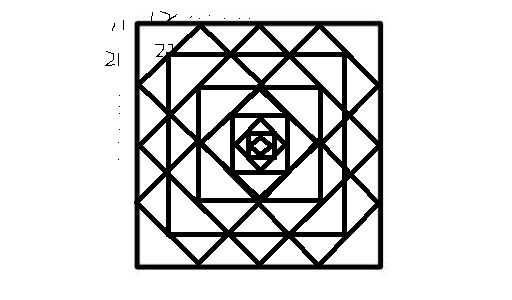You are given an n x n 2D matrix representing an image.
Rotate the image by 90 degrees (clockwise).
Note:
You have to rotate the image in-place, which means you have to modify the input 2D matrix directly. DO NOT allocate another 2D matrix and do the rotation.
Example 1:
Given input matrix = [ [1,2,3], [4,5,6], [7,8,9] ], rotate the input matrix in-place such that it becomes: [ [7,4,1], [8,5,2], [9,6,3] ]
Example 2:
Given input matrix = [ [ 5, 1, 9,11], [ 2, 4, 8,10], [13, 3, 6, 7], [15,14,12,16] ], rotate the input matrix in-place such that it becomes: [ [15,13, 2, 5], [14, 3, 4, 1], [12, 6, 8, 9], [16, 7,10,11] ]
题意:题目就是说把一个n×n的矩阵旋转90°。
我的算法测试的时候都是正确的,但测试样本都是12345....这样的,而不是LeetCode给的那种测试数据:

#include <iostream>
#include <vector>
using namespace std;
class Solution {
public:
void rotate(vector<vector<int> >& matrix) {
int row = matrix.size();
for(int i = 0; (row%2 == 0) ? (row > 5 ? i < row/2 : i <= row/2 ) : i <= row/2; i++) {
for(int j = 0; (row%2 == 0 && row > 5) ? j < row/2 : (row < 5 ? j <= i : j < row/2); j++) {
int cont = (row%2 == 0) ? matrix[row/2 - 1][row/2] : matrix[j][j];
if((i != j && cont == matrix[j][i]))
break;
swap(matrix[i][j], matrix[j][row - 1 - i]);
swap(matrix[i][j], matrix[row - 1 - j][i]);
swap(matrix[row - 1 - j][i], matrix[row - 1 - i][row - 1 - j]);
}
}
}
};
#define N 14
int main() {
int nums[][N] =
{
{10,151,33,143,165,11,13,28,69,159,194,16,108,53},
{8,67,159,59,114,13,24,121,16,13,71,122,158,187},
{85,160,147,52,116,181,1,86,194,167,71,24,131,26},
{41,1,81,7,69,1,67,184,15,49,66,32,19,94},
{111,134,87,154,100,39,11,21,177,13,65,132,138,93},
{114,74,121,112,76,7,120,147,9,189,92,25,-1,116},
{15,19,15,127,154,59,42,59,55,55,38,190,25,60},
{83,164,154,2,0,80,116,77,44,41,181,10,187,35},
{189,187,108,161,163,80,49,123,141,93,139,1,149,134},
{148,131,-1,37,57,111,40,58,148,157,92,194,156,35},
{161,104,71,111,97,180,77,21,65,128,145,163,178,46},
{122,88,181,75,24,138,113,82,54,155,97,7,73,191},
{158,186,31,81,96,59,193,150,44,76,172,66,161,79},
{35,144,126,158,37,112,38,18,55,109,58,66,69,156}
};
vector<vector<int> > matrix(N, vector<int> (N));
Solution so;
int k = 1;
for(int i = 0; i < N; i++) {
for(int j = 0; j < N; j++) {
matrix[i][j] = nums[i][j];
}
}
for(int i = 0; i < N; i++) {
for(int j = 0; j < N; j++) {
cout << matrix[i][j] << ‘\t‘;
}
cout << endl;
}
cout << endl;
so.rotate(matrix);
for(int i = 0; i < N; i++) {
for(int j = 0; j < N; j++) {
cout << matrix[i][j] << ‘\t‘;
}
cout << endl;
}
return 0;
}
但并没有通过...至少给的测试数据没通过的原因是,我的算法最多进行到层数的一半,也就是左上角的分块矩阵部分,所以无法进行到120,49,55,123这几个的位置...但对于12345...这样的14*14的矩阵却很正确的实现了。代码或许看着有些复杂,其实时间复杂度也不怎么样,O(n^2)。
题目来源:Rotate Image
